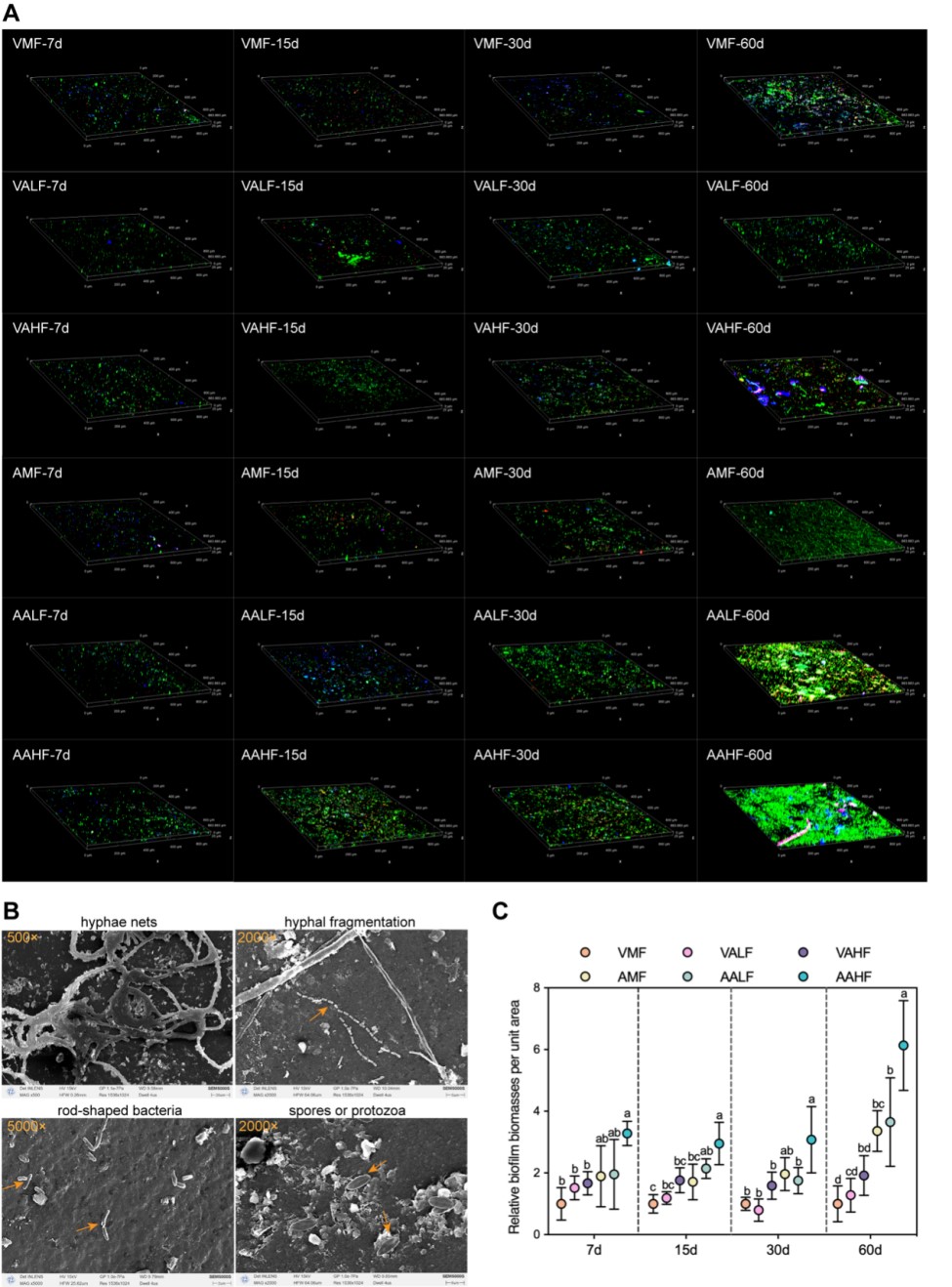Farm Herbicide Acetochlor Found to Accelerate Microplastic Degradation and Shift Microbial Community
A new study has revealed that the combined presence of herbicides and plastic mulch residues in farmland soils may significantly alter soil ecology, accelerating the breakdown of microplastics and facilitating the spread of potentially harmful microbes. The findings underscore growing concerns over compound agricultural pollution and its far-reaching environmental consequences.
Led by Dr. XU Mingkai at the Institute of Applied Ecology, Chinese Academy of Sciences, the research explored how acetochlor—a widely used herbicide in maize and other crops—interacts with mulch-derived microplastics (MDMPs) in the soil. These microplastics are small plastic particles, typically under 5 mm in size, that originate from the degradation of plastic films laid over cropland to maintain soil temperature, suppress weeds and retain moisture. The study, published in the Journal of Hazardous Materials, is among the first to detail the reciprocal environmental interactions between herbicides and MDMPs.
In controlled soil microcosm experiments, the researchers found that acetochlor is readily adsorbed onto the surfaces of MDMPs, especially on aged plastic fragments that have undergone environmental weathering. These aged particles, already more brittle and chemically altered, were found to bind significantly higher concentrations of acetochlor than their newer counterparts. At the same time, the presence of acetochlor actively accelerated the fragmentation and oxidative ageing of the plastics.
Crucially, the research examined how these chemical changes influenced microbial life on the surface of the plastics—a unique microenvironment termed the plastisphere. This is a distinct ecological niche formed on plastic debris where microbial communities assemble differently from those in surrounding soil. Using high-throughput sequencing of microbial DNA, the researchers tracked how acetochlor exposure altered the composition of plastisphere microbial communities.
They observed a pronounced increase in Pseudomonas—a genus of bacteria known for its ability to degrade both polyethylene plastics and organic pollutants such as acetochlor. While this might appear beneficial in terms of pollutant breakdown, it also resulted in reduced microbial diversity over time and a shift towards a more specialised, less resilient microbial community. Short-term exposure to acetochlor initially boosted diversity and inter-species interactions, but these effects were reversed with prolonged exposure, leading to functional narrowing of the microbial network.
Further, the study revealed that acetochlor stimulated the development of dense microbial biofilms, which are structured communities encased in an extracellular matrix, enhance chemical transformation and microbial protection on aged MDMPs.
These biofilms contributed to more extensive plastic degradation, but also posed risks by promoting the proliferation of resistant and pathogenic microbes. Since microplastics are easily transported by wind, water, or agricultural machinery, they may act as vectors for these microbes, facilitating their spread across environments. Figure 1 illustrates the development of biofilms on plastic surfaces in detail. It includes a 3D visualisation of the biofilm structure, microscopic imagery of microbial morphology, and comparative data on biomass density across treatments.
The findings raise critical concerns about the ecological consequences of simultaneous plastic film and herbicide use in intensive agriculture. They also highlight the potential for microplastics to serve not only as passive pollutants, but also as active participants in shaping microbial communities in soil ecosystems.
This research provides new insight into the complex interactions between agricultural pollutants and offers a scientific basis for reassessing the environmental management of herbicides and plastic mulches. As concerns over food security and soil health intensify, the study calls for more integrated, sustainable approaches to farm input regulation.

Figure 1. Biofilm structure and relative biomass on mulch-derived microplastics. (A) Three-dimensional biofilm structure; (B) microbial morphology on the plastic surface; (C) relative biomass per unit area. Differences shown are statistically significant (p < 0.05) (Image by Guan Xinyu)



